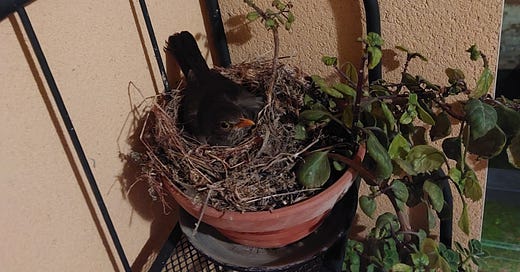Las casas están hechas con ladrillos.
Los seres vivos con células.
En cada una de esas células hay un libro de recetas con las que se puede hacer el organismo entero.
Así que son muy importantes. Y por eso salen en todos los curriculums hasta en la sopa.
Me imagino que habrás tratado el tema de la célula mil millones de veces en clase.
¿Pero cuantas células has visto?
No quiero decir un esquema de la célula.
Células de verdad.
Son pequeñajas. Para verlas necesitas un microscopio.
Te pregunto 3 cosas:
¿Tienes microscopio?
Si tienes ¿sabes usarlo?
Si sabes usarlo ¿has visto células con él?
¿Tienes oposiciones a la vista?
Si la respuesta es no, te aconsejo que eches un ojo a la situación de aprendizaje Haz tu propio microscopio. En ella te enseño a hacer un microscopio que funciona con el móvil.
Si no te sientes manitas ya sabes que lo puedes comprar hecho.
Y hasta el domingo a las 12 de la noche tendrás un protocolo de cómo ver las células de la cebolla.
Células de verdad, no conceptos abstractos. No esquemas en un papel.
Y si la respuesta a todo lo anterior es sí, también échale un vistazo. Tiene algunas ventajas.
Si ves el curso muy lejos, igual las oposiciones no tanto.
En la SA Haz tu propio microscopio tienes desarrollados todos los elementos curriculares de la LOMLOE: competencias específicas, saberes básicos… mira tú por donde igual te faltaba una SA, como a esta suscriptora:
Me examino el próximo día 22 de junio de la parte escrita, pero días después tendría la lectura del tema y la presentación de una situación de aprendizaje. Aquí es donde viene la madre del cordero. En muchas ocasiones he intentado escribir contexto, justificación y demás apartados, pero la verdad, me veo ante una empresa demasiado grande para afrontarla sola, solo hago que procastinar.
Digo yo que igual un microscopio mola para esto y encima es divertido.
Y si eres mamá o papá, el verano ya está aquí. Una oportunidad única de descubrir el mundo con tus hij@s. Y uno que no sueles ver: el diminuto.
Más información aquí:
Un abrazo
Txus veterinaria científica.
PD: La mirla bien. Sigue con 3 huevos. Quizá no ponga más, no sé. Ahora, creemos que por la noche viene el macho.
Como te dije el mirlo macho es negro y la hembra un poco gris. Mira la foto, no sé si es por la luz o es que realmente el pajaro de la noche es el macho. Si hay algún ornitólogo o fotógrafo (que entienda de luces) en la sala que se pronuncie por favor.


Recuerda que puedes subir los dibujos de tus niños aquí y salir en mi próximo cuento.
Houses are made of bricks.
Living things are made of cells.
In each of those cells there is a recipe book with which you can make the whole organism.
So they are very important. And that's why they're in every curriculum.
I imagine that you have dealt with the cell a billion times in class.
But how many cells have you seen?
I don't mean a diagram of the cell.
Real cells.
They're tiny. To see them you need a microscope.
I ask you three questions:
Do you have a microscope?
If you do, do you know how to use it?
If you know how to use it, have you seen cells with it?
If the answer is no, I advise you to take a look at the learning situation Make your own microscope. In it I show you how to make a microscope that works with your mobile phone.
If you don't feel like a handyman, you know you can buy it ready-made.
And until Sunday at 12 midnight you will have a protocol on how to look at onion cells.
Real cells, not abstract concepts. Not schematics on a piece of paper.
And if the answer to all of the above is yes, take a look at it too. It has some advantages:
*It's with a microscope that they make, so you can do a mixed project and it's cooler.
*It doesn't pringa. If you've looked at onion cells and stained them with methylene blue, you've stained the cells, your fingers, your students' fingers, the dishpan, the blotting paper, the light switch and I'm sure your lab is “bluer” than before.
I use a lot of methylene blue for zebrafish eggs (it is an excellent disinfectant) and I try but I always smear something.
Here I show you how to see onion cells, coloured, without the need for dyes.
A hug
María
PS: The mirla is fine. She still has 3 eggs. Maybe she won't lay any more, I don't know. Now, we think that at night the male is coming.
As I told you the male blackbird is black and the female is a bit grey. Look at the photo, I don't know if it's because of the light or if it's really the male bird at night. If there is an ornithologist or photographer (who understands lights) in the room, please tell me.



